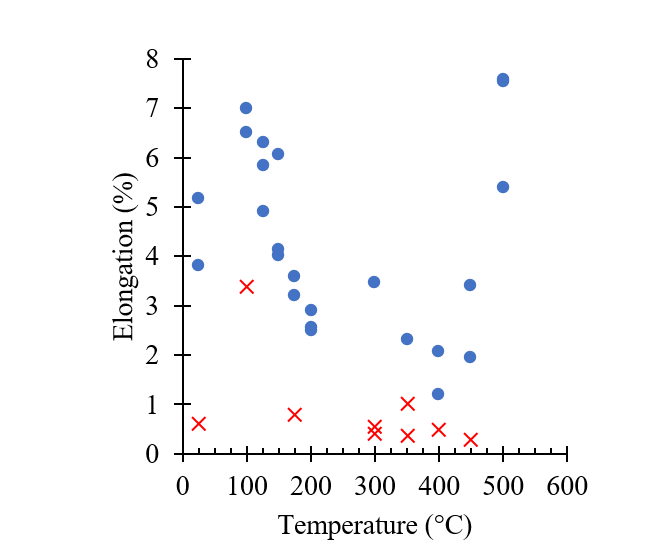


Addalloy HT showed susceptibility (and low ductility) to cracking that could be ameliorated with high-temperature stress relief which lowered the strength to barely meet acceptable success criteria.
Problem
Current additive aluminum alloys lack sufficient temperature capability for use in extreme environments.
Objective
The primary objectives for this project were to mature an aluminum alloy to meet performance targets for elevated temperature applications and demonstrate candidate alloy in representative part geometries for thermal management applications.
Technical Approach
This project included the specification development and characterization of powder feedstock, in addition to the testing of powders executed according to ASTM standards. The team developed AM processing parameters and evaluated material for tensile, hardness, and thermal properties. The consolidated material features a minimum relative density of 99.5% and exhibits an ability to readily produce a wall thickness of at least 0.5 mm. Upon demonstration of an acceptable AM process, the team tested tensile (elevated temperature and room temperature), fatigue (room temperature only), and creep rupture. The evaluation of thermal conductivity, microstructure, and failure analysis of fracture surfaces were also completed.
Accomplishments
This program successfully evaluated Addalloy HT against application performance requirements with several key findings and conclusions identified:
- Powder can be produced with quality at a production representative scale (contamination notwithstanding)
- Powder quality is sufficient for production with representative parameters
- Addalloy HT can be printed at/with a high density, good surface finish, and competitive rate
- The alloy develops significant residual stresses that can lead to part distortion and cracking in build
- A high temperature (>400°C) heat treatment is required to fully relieve stresses
- The microstructure undergoes an embrittling reaction at intermediate temperatures (~ 100°C – 350°C), particularly along melt track boundaries
- A viable high-temperature heat treatment was identified, 400°C for 16 h
- Upon evaluation of static tensile performance, it was discovered that room temperature performance was better than comparable heat treatment conditions of AlSi10Mg. There was also significant impact of defects on tensile performance when loaded parallel to the build direction (Z), and the elevated temperature outperformed baseline Al2219 to reveal an extended useful service temperature range.
- Fatigue performance of the alloy was evaluated and exhibited significant impact of defects on fatigue life when loaded parallel to the build direction (Z), as-printed surface condition specimens also behaved similarly to machined specimens, and overall fatigue performance did not meet baseline Al2219 levels.
- Creep rupture performance was evaluated and exhibited significant impact of defects on creep performance when loaded parallel to the build direction (Z). General creep rupture lives were like the Al2219 baseline but fell short of program targets.
- Thermal conductivity met program targets of 150 W/mK
- A heat exchanger core demonstration article was successfully printed and inspected. As a result, residual stress-driven cracking was noted in the build, scattered porosity was noted in thicker sections, and thin wall fins (0.010 in) were successfully printed.
- Alloy readiness is lower than desired and key challenges must be overcome to be more readily usable. Challenges include high residual stresses in build, susceptibility to cracking (embrittlement) along melt track boundaries after heat treatment, and high sensitivity of mechanical performance to in-build defects (notch sensitive).
Project Participants
Project Principal

Other Project Participants
- NanoAL
Public Participants
- U.S. Department of Defense
